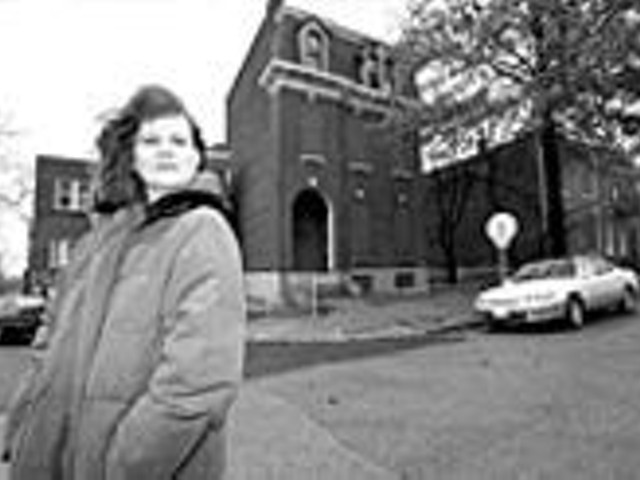Unreal: What do your kids think of having a teacher who's also a menacing defensive lineman?
Juanita Shaw: They think it's funny. Mainly the boys. The girls really don't understand that there's a girl playing football.
How did you fall in love with football?
My dad didn't have any boys, so I became a sports fanatic like my dad. We went fishing, I watched him do archery. We bowled together. We did the javelin together at the track when I was a little kid.
Is women's football a better product than men's arena football, and if so, why?
I think it's just as exciting as arena football. We just have to get the opportunity to show everyone. People hear about women's sports and they say, 'Oh, they're just trying to be like the guys.' But we have our own techniques.
Say you're in your kindergarten classroom and one of your students executes a bone-jarring tackle on another in a fit of rage. Do you discipline the student, high-five him or both?
I'd discipline the student. I'd explain that it would be something you would do on a football field, but this is not the place.
Do you think Brenda Warner would make a nice addition to the SLAM?
She seems to be very athletic. To see if she could handle a hit or two would be interesting. I know she can run. I'm not saying she has a whole lot of wind, but I think she can work on that.
Let's talk about your two role models on the Rams: Aeneas Williams and Leonard Little. The former owns a slew of car dealerships in his native Louisiana; the latter was found guilty of killing a woman while drunk behind the wheel of his Lincoln Navigator in 1998. Is it logical to assume that it's a career goal of yours to kill someone while drunk in a sport-utility vehicle sold by Aeneas Williams?
As far as Leonard Little, I like the way he plays on the field. What he does outside of the field has nothing to do with how I feel about him. Aeneas Williams, on the other hand -- what he shows me as a player and spiritually, I approve of.
A Shot to the Heart
The bummer news of the holiday drinking season for hooch hounds like Unreal can be summed up in one word: Bevinco.
A "beverage auditing control system," Bevinco was founded in Toronto in 1987. The St. Louis-area franchise, owned by John Miller, arrived this year. Promising to squeeze more profits out of the already high-profit-percentage booze racket, Miller contracts with bars to track liquor sales. "We ask for the recipe for every drink," he explains. "If it's a bloody mary and their pour is an ounce and a quarter, then we'd pour an ounce and a quarter of whatever vodka the owner told us it was. So then when we get their sales, if it says they sold five bloody marys, then we would multiply five times the ounce and a quarter. Then we come in with pharmaceutical scales, Palm Pilots with scanners and keg scales and weigh all the open liquor, scan all the full liquors, so we can actually compute to a hundredth of an ounce what liquor that an owner or operator is off."
Translation: If a bartender is giving away drinks, or skimming the till, Bevinco will find out.
Miller says bar owners customize their own booze-per-drink ratio. "I've got a place that pours a two-ounce pour, which is pretty healthy," he reports. "The average pour in St. Louis is an ounce and a quarter. We use whatever parameters that an owner has set up." Free drinks, he adds, can be accounted for as well.
"Typically, an average bar is off anywhere between 15 to 25 percent of their gross sales," Miller says forebodingly. "What that means is that if somebody buys a drink, for every dollar that comes in, you may as well throw twenty cents in the trash can. We get them down to 5 percent or less, which is huge. In some cases that's $3,000 or $4,000 a week."
Blueberry Hill owner Joe Edwards is familiar with the concept, though not with Bevinco. Regardless, he's got a different approach to achieving profits. "I really enjoy having bartenders who are good craftsmen," says Edwards, "who are just good, knowledgeable bartenders who don't require systems like that. I prefer good, fun, hard-working, honest people who make great drinks."
Bartender Roxanna Ratossa, who plies her trade at Modesto on the Hill, says systems like Bevinco don't take into account the hidden but crucial ways in which pourers can increase a bar's sales. Sometimes, for instance, she'll intentionally overpour. "For me, overpouring is about getting people back in," says Ratossa, who snagged this year's Best Bartender honor in the Riverfront Times' Best of St. Louis edition. "Because any time you get people back in, that's more money for you, and it's more money for everybody.
"And for me it's not necessarily about tips," she adds. "It's more of a long-term kind of thing. If people come back and back and back because they like you, and they like the drinks you pour, it's always going to be more money for you."
Still, this Bevinco thing's been haunting Unreal's dreams. In the wee, wee hours, while our chin is likely perched on the toilet rim, John Miller is up too, fiddling with his Palm Pilots and his pharmaceutical scales, spying!
It's enough to drive you to drink.





